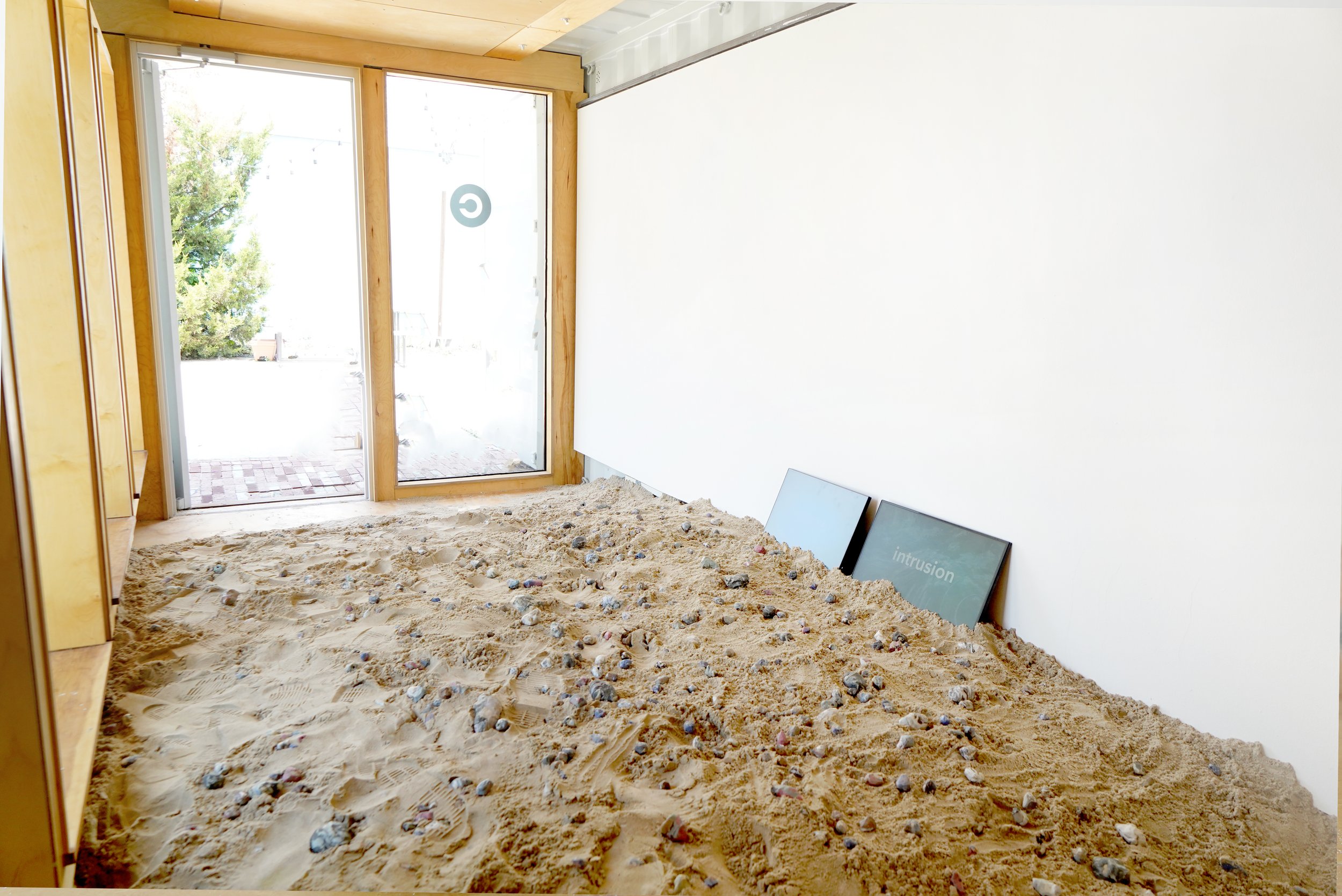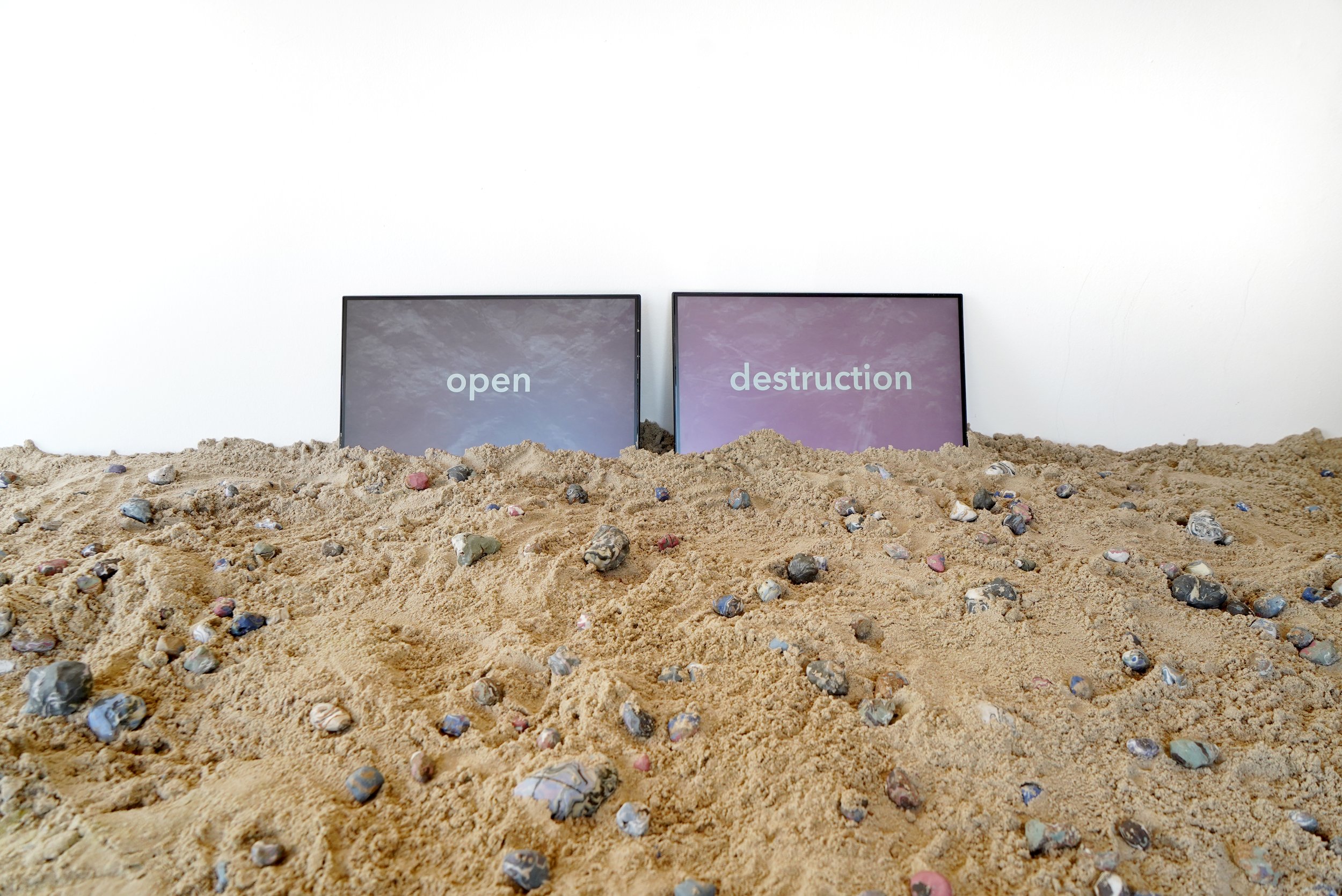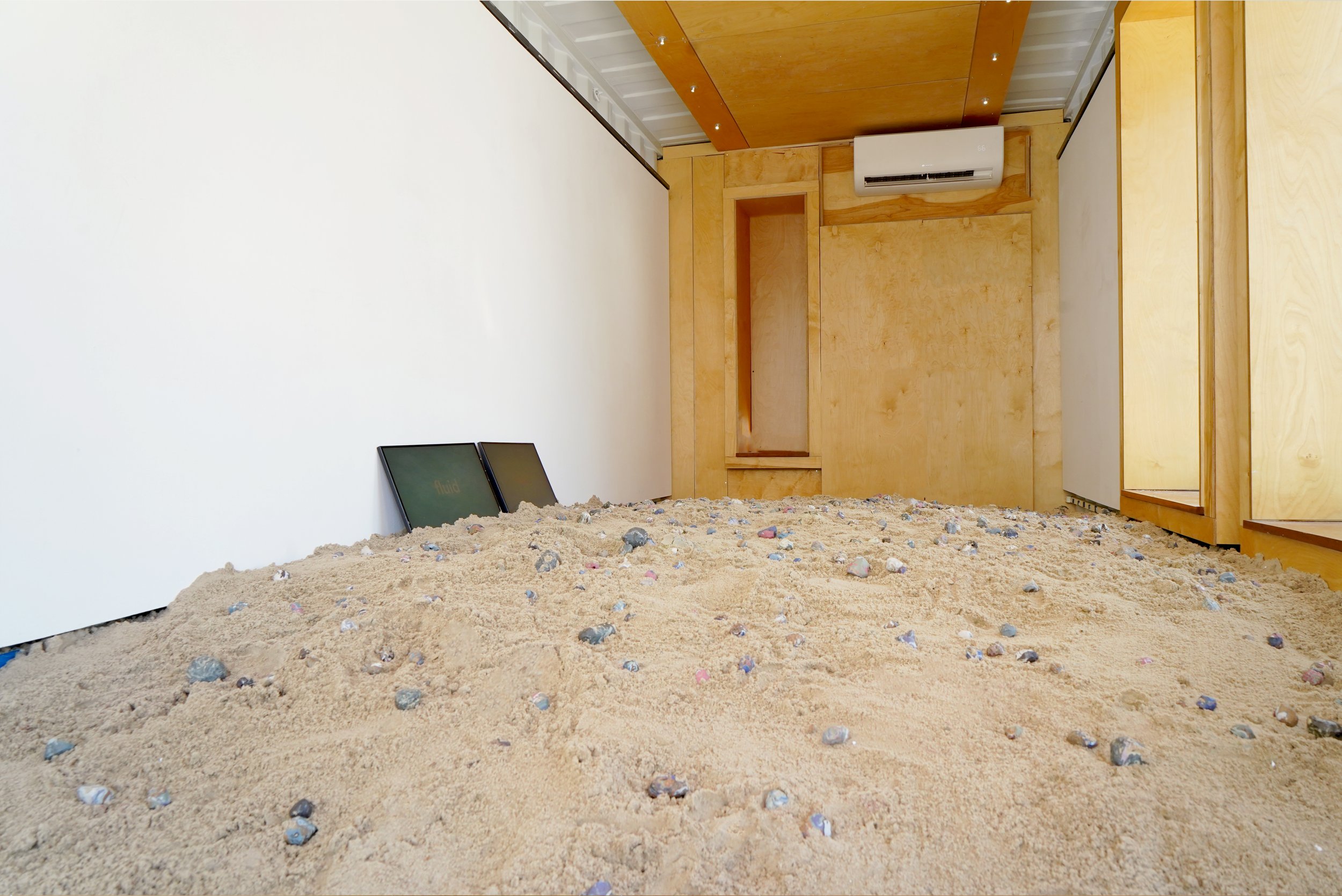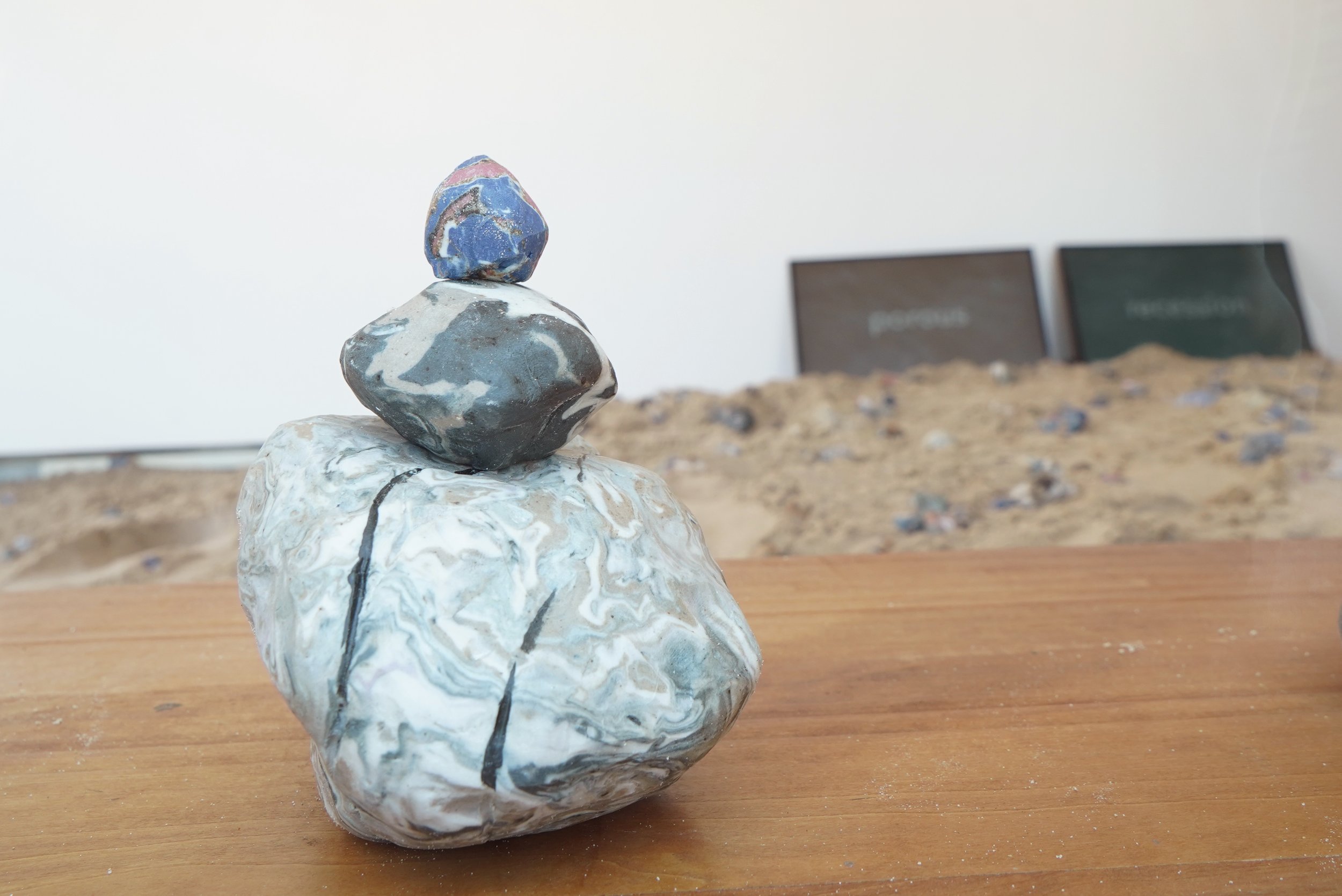





Tremors 2023 speakers, amplifier, monitors, sand, porcelain, Python/ObsPy code, Max patcher, and cables
Buried beneath one ton of sand, six speakers pulsate as they amplify a live feed of local seismic activity. The work synthesizes seismograph data into sound waves using an open-source ObsPy code and a Max patcher. Viewers are invited to traverse the sand mound to feel the magnified grumbling vibrations of the Earth's movements. The tremors vary between the speakers as they source from separate regional seismographs. Handmade porcelain rock sculptures are mixed into the sand. They are composed of different clay bodies wedged with pigment stains and high-fired raw. A video plays across two monitors with white text contrasting animated colored backgrounds. As a chance-operation poem, the words borrowed from geology texts cycle on each monitor at differing speeds to create an endless rotation of combinations. The work reminds us that this moving-shaking planet we live on is a body in flux. The ground we share is never static.
Special thanks to:
Ben Gwin and Owen Wang - coding and software development
Brett Bornhoft - electrical engineering and coding
Amanda Semler & Curtis Boden - geological data sourcing and consulting
Joshua Clark - audio equipment advising
Kansas State University United States National Seismic Network
Cedar Bluff United States National Seismic Network